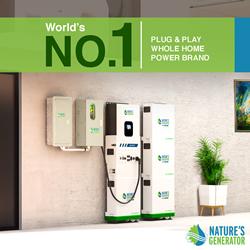New Proactive Planning Strategy Proposed for Distributed Generation
A strategy to accommodate high penetrations of distributed generation (DG) resources on utility distribution systems.
May 31, 2013. The Interstate Renewable Energy Council, Inc. (IREC) and the Sandia National Integrated Distribution Planning Concept PaperLaboratories (Sandia) have co-authored a concept paper outlining a strategy to accommodate high penetrations of distributed generation (DG) resources on utility distribution systems. The report, called the "Integrated Distribution Planning Concept Paper," is important in light of the dramatic rise in requests for interconnection of renewable energy systems, particularly solar photovoltaics (PV), to utility distribution systems.
In areas with the most robust DG growth, applications to interconnect new generation have overwhelmed utility processes, caused project delays, and in some cases, imposed prohibitive costs. In areas where DG penetration is already high, these delays and increased costs have slowed DG growth and resulted in public criticism of utility interconnection processes.
The IREC-Sandia paper proposes an approach to proactive planning for growth in DG called Integrated Distribution Planning (IDP). IDP is drawn from a variety of efforts being contemplated or implemented in utilities across the United States. These efforts look to proactively plan for DG growth and anticipate distribution system upgrades that may be necessary to accommodate that growth.
"IDP marries interconnection and distribution planning in a way that allows projects in high penetration areas to interconnect more efficiently and with greater cost certainty," said Tim Lindl, a member of IREC's regulatory team and one of the authors of the paper.
Generally, IDP proceeds in two steps by: (1) determining the ability of the existing distribution system to host DG and (2) identifying additional infrastructure that may be necessary to accommodate anticipated growth. The results of IDP provide insight useful in processing subsequent interconnection requests by informing the level of penetration that can be accommodated without impacts. For higher penetration levels, IDP will give a utility foreknowledge of the upgrades that may be required to ensure maintenance of safety, reliability and power quality standards.
"Sharing expertise and experience, the IREC/Sandia combined effort allowed us to dig deep into these issues, resulting in promising approaches and forward-thinking results," said IREC President and CEO Jane Weissman.
About IREC
IREC believes clean energy is critical to achieving a sustainable and economically strong future. To pave this clean energy path, IREC works to expand consumer access to clean energy; generates information and objective analysis grounded in best practices and standards; and leads programs to build a quality clean energy workforce, including a unique credentialing program for training programs and instructors. Since 1982, IREC's programs and policies have benefitted energy consumers, policymakers, utilities and the clean energy industry.
Featured Product

